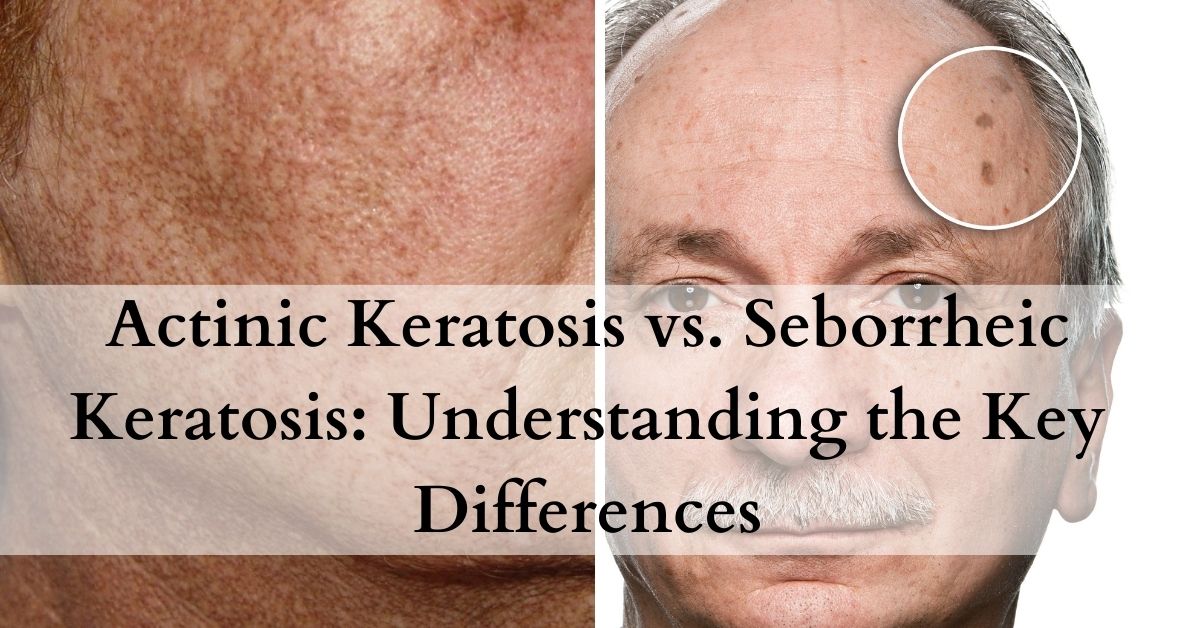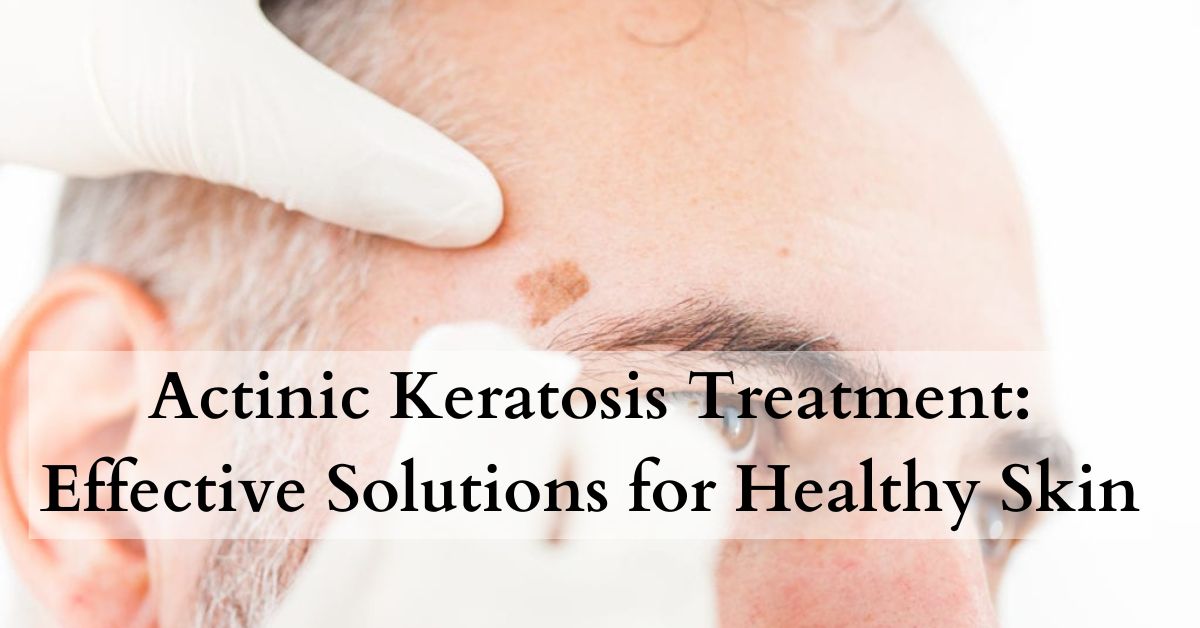
Understanding Actinic Keratosis: Symptoms, and Treatment Options
October 9, 2023
Actinic Keratosis vs. Seborrheic Keratosis: Understanding the Key Differences
October 16, 2023It is of utmost importance to acknowledge the symptoms, comprehend the risk factors, and promptly pursue treatment in order to effectively impede the advancement of actinic keratosis into skin cancer. There exist diverse treatment alternatives, hence it is advisable to seek guidance from a dermatologist to ascertain the most suitable course of action tailored to your individual circumstances. It is imperative to bear in mind that safeguarding your skin against ultraviolet rays by employing sunscreen and donning protective clothing constitutes the initial measure in preventing actinic keratosis and upholding skin well-being.
Understanding Actinic Keratosis
Actinic keratosis, a condition that manifests in the form of coarse, scaly patches on the skin, presents a diverse tapestry of hues, spanning from delicate shades of pink to vivid tones of red or rich browns. These irregular patches tend to make their presence known on those parts of the body that bear the brunt of frequent sun exposure, notably gracing areas like the visage, ears, neck, scalp, chest, dorsal side of hands, forearms, and even the lips.
Causes and Risk Factors
Sun Exposure: Prolonged exposure to UV radiation from the sun is the primary cause of actinic keratosis. UV rays damage the skin over time, leading to the development of these lesions.
Fair Skin: Individuals with fair or light skin are more susceptible to actinic keratosis because they have less melanin, which provides some protection against UV radiation.
Age: Actinic keratosis is more common in older adults, as cumulative sun exposure increases the risk over time.
Weakened Immune System: A compromised immune system, whether due to medical conditions or medications, can make you more prone to developing AKs.
Now that we understand what actinic keratosis is and what causes it, let’s delve into the various treatment options available to combat this skin condition effectively.
Treatment Options for Actinic Keratosis
-
Topical Medications
Topical medications are often the first line of treatment for actinic keratosis. These creams or gels are applied directly to the affected skin. Common topical treatments include:
Fluorouracil (5-FU): This medication works by causing the affected skin to become red and irritated, ultimately leading to the clearance of AKs.
Imiquimod (Aldara): Imiquimod helps boost the immune system’s response, aiding in the clearance of actinic keratosis cells.
Diclofenac Sodium (Solaraze): This gel reduces inflammation and helps eliminate actinic keratosis when applied consistently.
-
Cryotherapy
Cryotherapy involves freezing the actinic keratosis lesions using liquid nitrogen. This causes an immune response which clears AKs. It’s a quick and effective treatment option commonly used by dermatologists.
-
Photodynamic Therapy (PDT)
PDT is a procedure that combines a special photosensitizing solution with light therapy. The solution is applied to the affected area, and when exposed to light, it destroys the actinic keratosis cells. This treatment is particularly effective for widespread lesions.
-
Chemical Peels
Chemical peels involve applying a chemical solution to the skin, which causes the top layer of skin to peel off, removing the actinic keratosis lesions. This treatment can improve skin texture and tone as well.
-
Laser Therapy
Laser therapy uses intense beams of light to precisely target and remove actinic keratosis lesions. It’s a highly effective method with minimal scarring.
Choosing the Right Treatment
The choice of treatment for actinic keratosis depends on various factors, including the severity of the condition, the patient’s age, overall health, and personal preferences. It’s crucial to consult a dermatologist who can assess your specific situation and recommend the most suitable treatment plan.
Conclusion
Actinic keratosis is a prevalent dermatological concern that demands your attention, for it harbors the potential to progress into a perilous skin condition—skin cancer. Swift and appropriate intervention is imperative for safeguarding the well-being of your skin. Whether you choose to explore topical remedies, embrace cryotherapy, delve into photodynamic therapy, consider chemical peels, or explore the possibilities of laser therapy, rest assured that there are efficacious solutions at your disposal to combat actinic keratosis. Additionally, don’t underestimate the significance of sun protection. Shield your skin from excessive ultraviolet radiation by consistently applying sunscreen and taking precautionary measures. Above all, connect with a qualified dermatologist to chart out a personalized treatment plan. Your skin’s health is an invaluable asset, deserving the finest care and preventive measures available.

